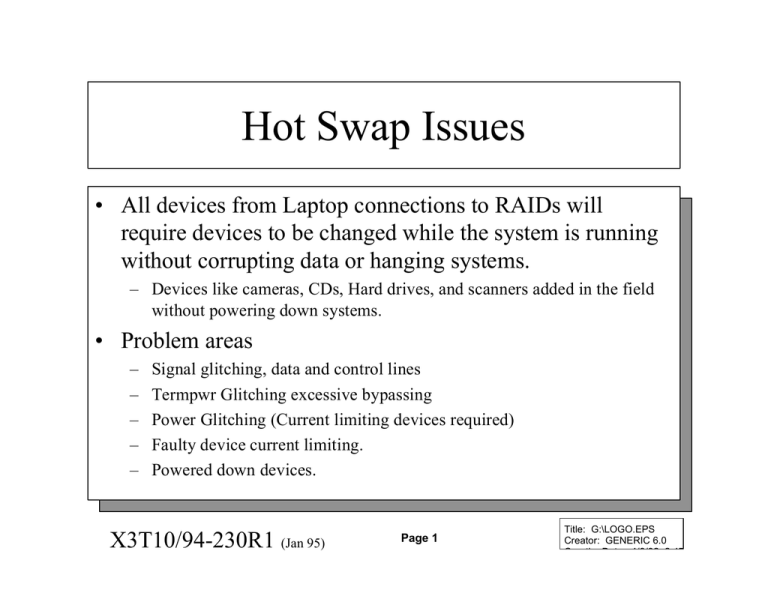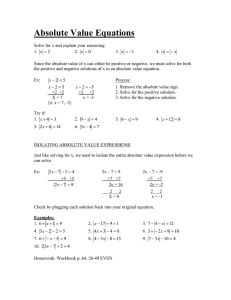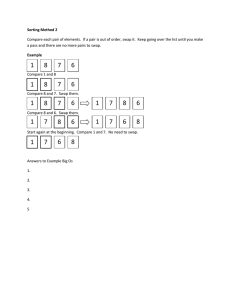Hot Swap Issues
advertisement

Hot Swap Issues • All devices from Laptop connections to RAIDs will require devices to be changed while the system is running without corrupting data or hanging systems. – Devices like cameras, CDs, Hard drives, and scanners added in the field without powering down systems. • Problem areas – – – – – Signal glitching, data and control lines Termpwr Glitching excessive bypassing Power Glitching (Current limiting devices required) Faulty device current limiting. Powered down devices. X3T10/94-230R1 (Jan 95) Page 1 Title: G:\LOGO.EPS Creator: GENERIC 6.0 C ti D t 4/8/92 2 47 X3T10/94-230R1 SPI-Hot Swap/Plugging SCSI-3 SPI Hot Swap/Plugging January 4, 1995 Abstract: This standard defines the additional requirements for hot swap over the SCSI-3 Parallel Interface (SPI) standard. This is not a standalone document, but an additional requirements document for hot swap/plugging applications, only the differences with SPI are defined in this document. Editor: Paul D. Aloisi Unitrode 7 Continental Blvd Merrimack, NH 03054 USA Telephone: 603-429-8687 FAX: 603-424-3460 Email: aloisi@uicc.com 1.0 Foreword: A requirement has developed for Hot Swap/Plugging devices which have not been fully addressed by SCSI-3 SPI. Hot Swap/Plugging devices is not just for RAID system, but is becoming a requirement even for small systems. Scanners, portable CD ROM drives, Cameras and external drives are being connect to small and portable systems on the fly. Hot Swap/Plugging devices is a new system requirement for all SCSI devices. 1.1 Scope: This document specifies items that are different than SCSI-3 SPI, it is not a complete parallel SCSI definition. Items not define in this document, SCSI-3 SPI rules apply. 2.0 Hot Swap/Plugging Devices Hot Swap/Plugging devices has direct effects on every connection. All data and control lines, termpwr, and power all have to limit current to no disrupt the running system. 2.1 Signal Lines The SCSI-3 SPI limit is 1.5 mA at 2.7 Volts. There are two effects, one the grounds must make contact first or the whole drive can be charged to discharge the drive or the whole drive is the capacitor that is discharge. All power supply grounds shall be common. Isolated power for each device will not work unless separate ground connection are supplied between the devices. ESD structures within the ICs must be designed as a zener structure. Rail clamping will clamp the signal until power is present on the device. All devices shall not clamp the system when not powered. This will allow customers to only power the devices that will be used for the current application. The capacitance of the signal line has to be charged, 25 pF using 110 ohms is 2.7 ns TC. If signal lines are above the maximum capacitance glitches may exceed the 10 ns glitch filters. FAST-20 removed the glitch filter and restricted the threshold. Hot Swap/Plugging on a FAST- 20 bus may cause errors. The signal line capacitance charging can only be reduced by reducing the capacitance of the signal line. A 3 ns glitch filter is required for Hot Swap/Plugging to prevent the signal capacitance charging from causing data or control errors when devices meet the maximum capacitance. All devices design for hot swap/plugging shall be less than the maximum 25 pF. The receivers shall have a 3 ns glitch filter. Drivers and receivers shall power up glitch free, the current requirement is 1.5 mA at 2.7 Volts. Low power systems will low termination current shall not be hot swap/plugging. 2.2 Termpwr Glitching The termpwr line is normally bypassed on every device. Hot Swap/Plugging shall restrict the size of the bypassing capacitors to 10 µF maximum, as required in SPI annex A.4.h. Termpwr glitching is directly reflected on the pull up with passive termination. Regulated terminators are required at the ends of Hot Swap/Plugging buses. A 10 µF capacitor connected to the termpwr line can cause a power glitch on the unit providing termpwr. The current glitch of a 10 µF capacitor shall be considered in the design. This may require a current limiting device like an electronic circuit breaker with current limiting. An automatic reset device shall be used on the termpwr supply. 2.3 Power Glitching Devices that are Hot Swapped/Plugged shall limit the current from the supply lines, this is not a SCSI bus requirement, but a general system requirement. The large bypassing on the device limits current only by the ESR of the capacitors and the connector resistance. Current limiting devices shall be used, example an electronic circuit breaker that limits the current during over current peaks. This reduces the high charge current to a manageable level during the hot swap/plugging reducing the power glitch to the tolerance of the voltages, 5 Volt +/-5%, 12 Volt +/- 10%. The electronic circuit breaker with current limiting has a second advantage, it there is a fault on the device the circuit breaker will go from current limit to open without shutting down the system.



